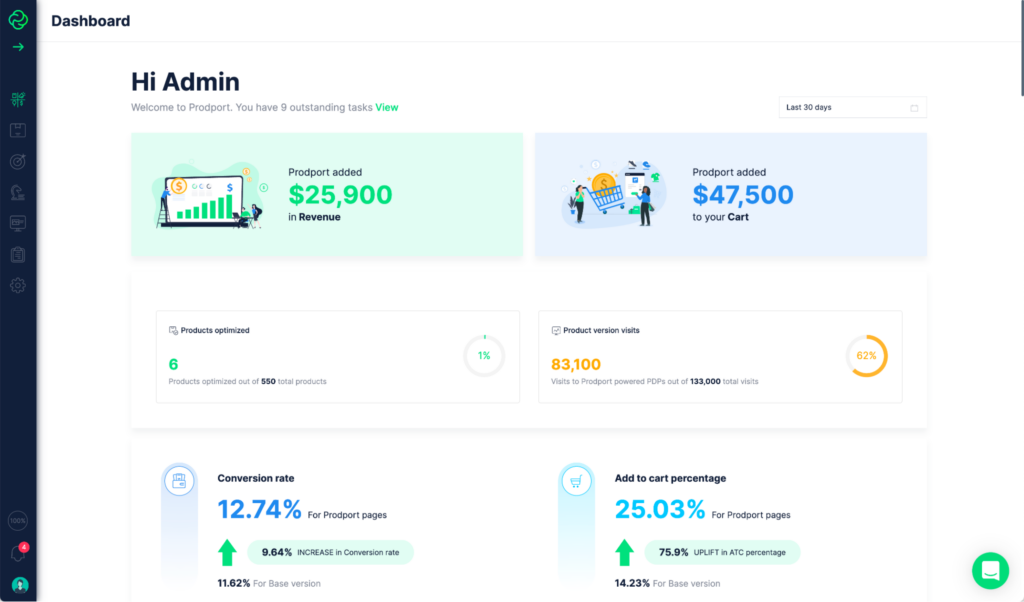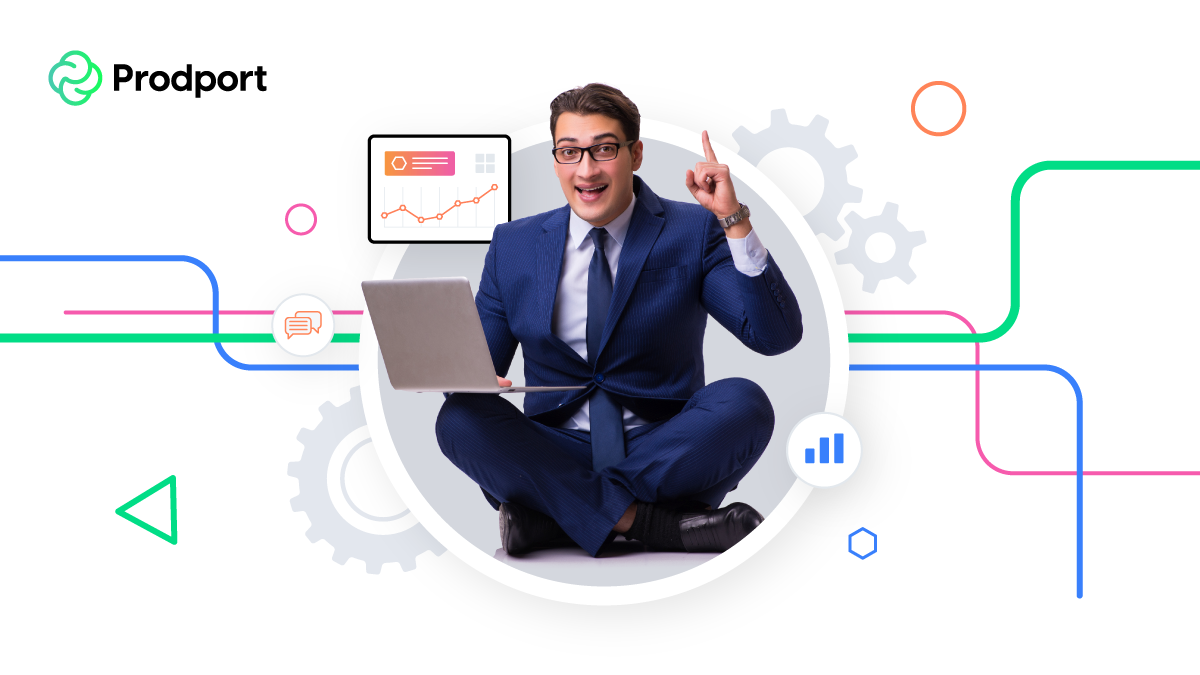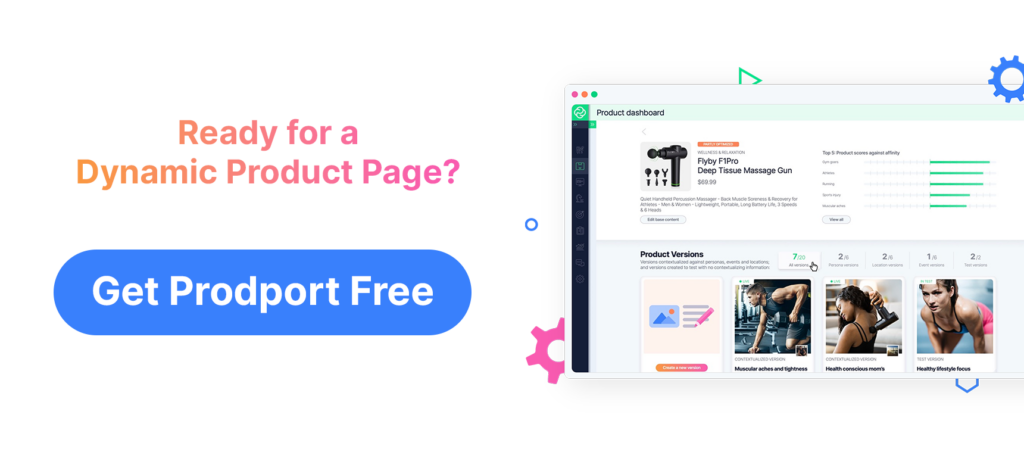You’ve launched your e-commerce business, and the traffic to your site is buzzing, but are you making the most of every visitor? The secret to turning visitors into customers lies in understanding and optimizing your conversion funnel. Let’s unravel this customer journey together.
Key takeaways
- Understand the conversion funnel to maximize sales and customer satisfaction.
- Boost Awareness, Interest, Decision, and Action stages with marketing strategies and comprehensive product info.
- Measure KPIs regularly for conversion funnel optimization.
Understanding the conversion funnel

Imagine a funnel. Wide at the top, it gradually narrows down towards the bottom.
This funnel represents your potential customer’s journey. It shows the transition from website visitors to paying customers (provided everything goes well). This journey, known as the marketing funnel or sales funnel, consists of several stages:
- Awareness
- Interest
- Decision
- Action
Each funnel stage of the sales process plays a pivotal role in guiding potential customers toward the desired action – making a purchase.
However, not all who enter the funnel reach the end.
Some may lose interest, others might be lured away by competitors, while a few might simply forget. Hence, fine-tuning your conversion funnel is vital to pinpoint potential breakdown points in the buyer’s journey and systematically address them. Such an optimization not only improves marketing efforts but also leads to more sales and happy customers.
Awareness
At the top of the funnel (TOFU) is the Awareness stage, the point where potential customers first become aware of your brand or product. Given that millions of businesses compete for customers’ attention, what strategies can make your brand stand out?
The key lies in creating a robust marketing strategy that resonates with your target audience. This might include:
- Engaging with customers through social media
- Maintaining brand visibility in search results
- Using Pay-Per-Click advertising and blogs
- Optimizing your content through search engine optimization (SEO)
These strategies can help draw potential customers to your website through organic search (which expands your reach and increases visibility).
Interest
After potential customers become aware of your brand, the subsequent task is to captivate their attention. This is when the Interest stage takes the spotlight. Here, you need to engage your audience with:
- Compelling product descriptions
- High-quality images
- Videos
- Consistently updated website content
It is essential to personalize your marketing to keep customers interested and increase customer lifetime value. Just look at the stats. 73% of shoppers expect brands to understand their unique customer needs and expectations. (Insider Intelligence)
Personalization strategies to evoke interest:
- Targeted content, including email marketing campaigns
- Well-executed entry point layouts on blogs, site homepages, and product pages with compelling copy and engaging visuals (Pst! Check out Prodport and easily create personalized product pages on your online store!).
- Positive reviews
- Promotional strategies such as free shipping, discount codes, and content marketing
Decision
When potential customers arrive at the Decision stage, they have already begun considering a purchase.
They have recognized their need or problem and have gathered information about possible solutions. To find the best fit for their needs, they are now evaluating different options.
Here, they need clear, concise, and comprehensive information to help them decide.
- A seamless browsing experience on the website helps them find what they’re looking for faster
- Videos demonstrate the product in action and provide a realistic preview of what to expect
- Thorough descriptions that highlight the unique selling points (USP) of the product and address any potential questions or concerns a buyer might have
Moreover, customer reviews can have a considerable impact on a customer’s purchasing decision. They serve as a form of social proof. These testimonials reassure potential customers of the product’s quality and performance. And all of that leads them to the next stage of the funnel.
Action
The final stage of the conversion funnel is the Action stage. At this moment, potential customers are prepared to make a purchase, yet they may need a gentle nudge to finalize their decision.
What are the best ways to encourage the user to become a paying customer?
- Persuasive calls-to-action (CTAs) with clear and compelling copy should be strategically placed where they are most effective – in advertisements, on product pages, within emails, and on checkout pages.
- Limited-time offers to create a sense of urgency, e.g., discounts for first-time buyers or specific promotional items, can act as additional motivators
- A hassle-free checkout process that minimizes friction and complications
➡️ Get to know more about the e-commerce conversion funnel here: The Ultimate Guide to Ecommerce Conversion Funnel for Your Business in 2023
Tips for conversion funnel optimization

So, you’ve got a grasp on the effective conversion funnel stages. Now, it’s time to get some good practices to make it work like a charm.
Optimizing your conversion funnel isn’t just about tweaking a few things here and there. Your goal is to understand your customers’ journey, to understand their needs – and then to deliver exactly what they need, whenever they need it.
Here’s how to boost conversion rate optimization and understand the intricacies of conversion funnels.
Use social media marketing
Social media channels strategically pull visitors into your sales funnel.
You can generate more leads by creating content that resonates with your audience.
Use tailored messaging to address the specific needs and preferences of potential buyers. This approach not only increases website traffic but also helps in nurturing these leads through different stages of the funnel.
The results? It ultimately turns them into paying customers.
Optimize with paid search to target potential buyers
Paid search is a game-changer for online marketing, especially for ecommerce businesses.
It allows you to place your brand right in front of highly qualified leads. By targeting specific keywords related to your business model and customer needs, you can maximize conversions.
Get the right leads, not just more.
Tip: Paid ads can be tailored to target potential buyers at various funnel stages, from the awareness to the consideration phase.
Boost customer engagement
Customer engagement is the heart of your sales funnel works.
It’s about creating a customer experience that meets and exceeds expectations.
Engage with your audience through social media, email campaigns, and web pages. Use analytics to understand what your average customer is looking for and tailor your approach accordingly.
Prodport is a solution that can help you engage your customers even more. It’s a platform that allows you to create tailored product pages based on the user’s behaviors. (Chirp even caught +49.7% of the conversion rate after implementing Prodport!).

Prodport gives you detailed insight (e.g., audience’s bounce rate, time on page, add-to-cart increase) that you can use to optimize the funnel further.
Build long-term relationships
Don’t just focus on acquiring new customers. Pay attention to your repeat customers.
They are key to maximizing conversions. Create loyalty programs or offer special deals to encourage repeat purchases. Personalized email campaigns can re-engage past customers, reminding them of what they loved about your products or services.
Remember: it’s easier to sell to someone who has already bought from you than to a new lead.
Good practices of measuring and analyzing Conversion Funnel performance
The optimization of the conversion funnel is a continuous process. Here are some things to keep in mind when analyzing your funnel.
- Track the right metrics to see what’s going on. Key metrics include conversion rates at each funnel stage, average order value, and customer lifetime value. These numbers tell you not just who’s buying but how much and how often.
- Use tools like Google Analytics to get a sneak peek into how customers interact with your website. Which pages are they sticking around on? Where are they bouncing off? This insight is like gold – it shows you where the leaks are in your funnel.
- Not all visitors are created equal. Segment your audience to understand different behaviors and preferences. Maybe new visitors behave differently than repeat customers. Tailor your strategies to each segment for more precise targeting.
- A/B testing is your best friend now. Think your landing page is perfect? Test it. Create two versions (A and B) and see which one performs better. You need hard data to back up your decisions.
- Map out the customer journey from start to finish. Where are they dropping off? Is there a stage in the funnel that’s not performing as well as the others? Understanding this journey helps you pinpoint areas for improvement.
- Sometimes, the best way to understand performance is to go straight to the source – your customers. Surveys, feedback forms, and even direct conversations can provide invaluable insights into what’s working and what’s not.
Wrap-up
From getting to grips with the conversion funnel’s various stages to figuring out how to make each one tick – it’s been a real journey.
But here’s the thing: the conversion funnel isn’t just a series of steps leading to a sale. It’s the path every potential customer walks down, starting from that first ‘aha’ moment of awareness right through to the final decision to buy.
Optimizing this journey isn’t something you do once and then forget about. It’s more like tending to a garden – it needs regular care and attention.
By really getting into your customers’ shoes and shaping your strategies around what they need and want, you’re not just nudging your conversion rates up a notch. You’re building a base of loyal customers who’ll keep coming back for more.
Frequently Asked Questions (FAQs)
Here are the most common questions related to the conversion funnel topic.
What is another name for a conversion funnel?
A conversion funnel is also known as a Sales Funnel or AIDA Model, which are terms used to help companies understand the journey of the conversion path.
What is the conversion phase of the marketing funnel?
In the marketing funnel, conversion represents the final push to convert prospects to buyers.
What is conversion rate through funnel?
The Conversion Rate through Funnel is a metric that measures the percentage of users completing an action or set of actions along the marketing funnel. It’s the number of users who made a desired outcome, such as purchasing or signing up for a newsletter. It is also known as the Sales Funnel Conversion Rate, as it represents the rate at which prospects convert from leads to closed-won deals.
Why is it important to optimize the conversion funnel?
Optimizing the conversion funnel is essential to identify and address any points in the buyer’s journey that could prevent sales, leading to more successful marketing efforts and happier customers.
How can I attract potential customers in the Awareness stage?
To attract potential customers in the Awareness stage, create a marketing strategy that resonates with your target audience. Engage through social media, optimize search results, and use PPC advertising and blogs.

